Site of Aransas Hotel in Rockport
Austin and Main St.,Rockport, TX 78382 (see map) MARKER TEXT Built in 1889 by civic leader and politician John H. Traylor, the Aransas Hotel covered this city block. The three-story structure, a major tourist attraction in Rockport, had about 100 rooms and a massive open dining room with a 200 person capacity. Guests were entertained by orchestras, plays, a mounted bird display, and beach facilities. They could also cruise in Traylor’s yacht, or tour in surreys from the livery stable. Remodeled and named the Del Mar in the mid-1890s, it was sold in 1910. Deteriorated by 1906 and unused during World War I, the hotel was destroyed by fire in 1919. (1996)
Rockport Wharves and Pavilions
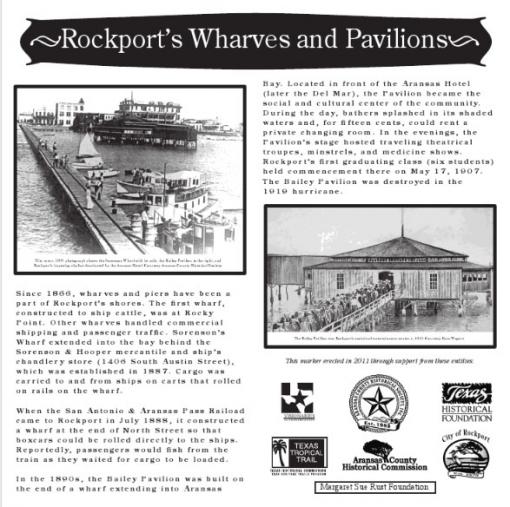
Since 1866, wharves and piers have been a part of Rockport’s shores. The first wharf was at Rocky Point, constructed to ship cattle. Other wharves handled commercial shipping and passenger traffic. Sorenson’s Wharf extended into the bay behind the Sorenson & Hooper mercantile and ship’s chandlery store (406 South Austin Street), which was established in 1887. When the San Antonio & Aransas Pass Railroad came to Rockport in July 1888, it constructed a wharf at the end of North Street so that boxcars could be rolled directly to the ships. In the 1890s, the Bailey Pavilion was built on the end of a wharf extending into Aransas Bay in front of the Aransas Hotel (later the Del Mar) and became the social and cultural center of the community. Rockport’s first graduating class (six students) held commencement there on May 17, 1907. The Bailey Pavilion was destroyed in the 1919 hurricane.
The Packeries of Rockport
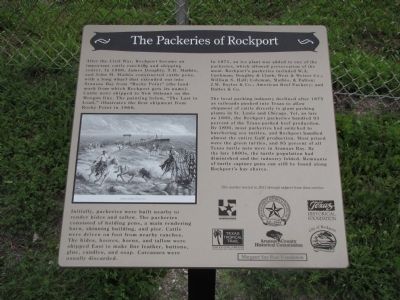
In 1866, James Doughty, T.H. Mathis, and John M. Mathis constructed cattle pens, with a long wharf that extended out into Aransas Bay from “Rocky Point” (the landmark from which Rockport gets its name). Cattle were shipped to New Orleans on the Morgan line. The hides, hooves, horns, and tallow were shipped East to make fine leather, buttons, glue, candles, and soap. Carcasses were usually discarded. In 1871, an ice plant was added to one of the packeries, which allowed preservation of the meat. As late as 1880, the Rockport packeries handled 93 percent of the Texas-packed beef production. By 1890, most packeries had switched to butchering sea turtles, and Rockport handled almost the entire Gulf production. By the late 1890s, the turtle population had diminished and the industry folded. Remnants of turtle capture pens can still be found along Rockport’s bay shores.
Rockport Harbor
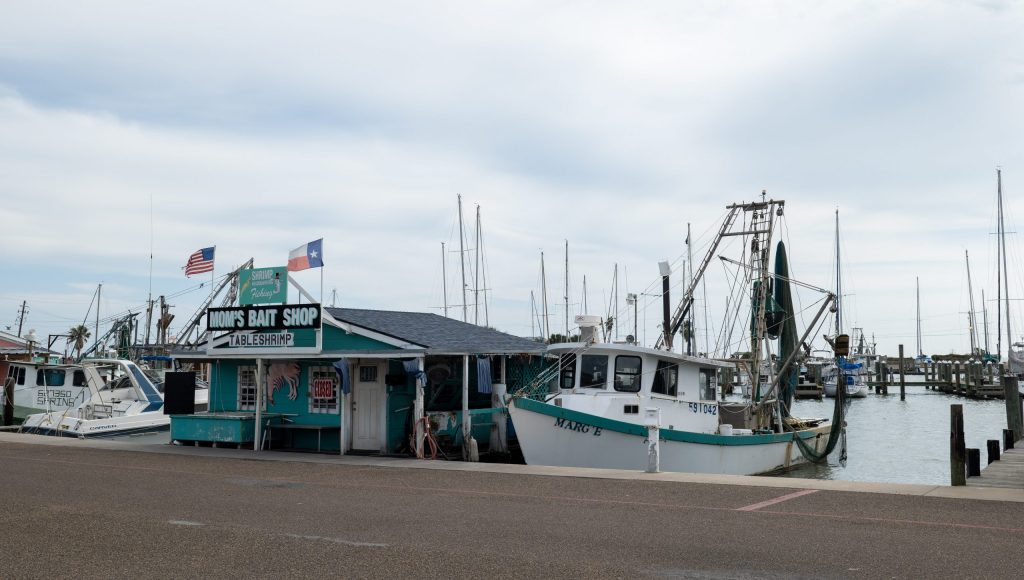
28°01’29.9″N 97°02’51.2″W Navigation Cir, Rockport, TX 78382 (see map) In 1866, James Doughty and Richard H. Wood, searching for a safe harbor location to ship cattle, built pens and a livestock-shipping wharf on “Rocky Point”. Other wharves and pens followed. Soon, a regular schedule of Morgan line shallow-draft steamboats arrived with merchandise and departed with cattle and packery products. In 1888, the railroad ignited a boom in Rockport, prompting local businessmen to begin advertising a strategic harbor near the Gulf. They also pushed to deepen it and create a deep-water port, but the effort ended when Corpus Christi opened its port in 1926. However, abundant harvests of fish, oysters, and shrimp fueled a thriving seafood industry. By 1910, fish houses anchored the southwest side of the Rockport Harbor and numerous fishing boats moored at harbor wharves. By 1940, a new breakwater and a concrete piling and steel seawall created a small-craft safety basin which became Rockport’s famous “fish bowl” harbor.
Rockport’s Seafood Industry

28°01’28.3″N 97°03’01.5″W 198 TX-70 Loop, Rockport, TX (see map) Rockport’s commercial seafood companies have been operating for more than one hundred years. By 1903, David Rockport Scrivner had opened a fish house. In 1907, it sold and became the Jackson Fish Company. A few years later, it sold again and began the Union Fish Company. The 1919 hurricane destroyed the Union Fish building, but it was rebuilt, and, in 1932, the building became a ship’s chandlery. About 1909, the Rockport Fish and Oyster Company was established. In 1919, Ford Jackson bought his brother’s interest in the Jackson Fish Company and changed the name to Jackson Seafood Company. Jackson added shrimp to his harvest, and the local shrimping industry developed rapidly after 1925. By 1935, the Johnson Fish Company was established; shrimp was its main product. After Hurricane Celia in 1970, Jackson Seafood diversified by harvesting sea scallops on the East Coast. Although the company closed in 1991, several other Rockport firms have continued harvesting fish and shrimp.
Woman’s Club of Aransas County
1104 E. Concho, Rockport, Tx 78382 (see map) MARKER TEXT In March 1948, Mrs. Fred B. Hunt issued a call to organize the Woman’s Civic Club. One of the Club’s major early activities was financing a permanent building for the organization. Later that year, the recreation building for Humble Oil Company employees at Ingleside went up for auction, and the club put in a bid that was accepted. The building was then brought to Rockport in three sections by barge. The hip roof, rectangular plan building features a five-bay entrance porch with stone columns, banks of paired windows along each side and an Austin stone veneer.
Rockport Marine Laboratory
702 Navigation Circle, Rockport, Tx 78382 (see map) MARKER TEXT In 1935, Rockport Marine Lab was set up aboard the houseboat “Vivian” in Rockport Harbor to assist the Texas Game, Fish and Oyster Commission with fisheries management. In 1947, a permanent lab was built on the harbor, a state of the art facility including a public aquarium. When the commission merged into the Texas Parks and Wildlife Dept., the lab began support of its Coastal Fisheries Division in long-term management of fisheries populations to ensure sustainable stocks of finfish, shellfish and other marine life important to commerce and recreation. The lab’s research over the years has helped make Texas a national leader in marine fisheries management. 175 Years of Texas Independence * 1836-2011
Rockport Center for the Arts
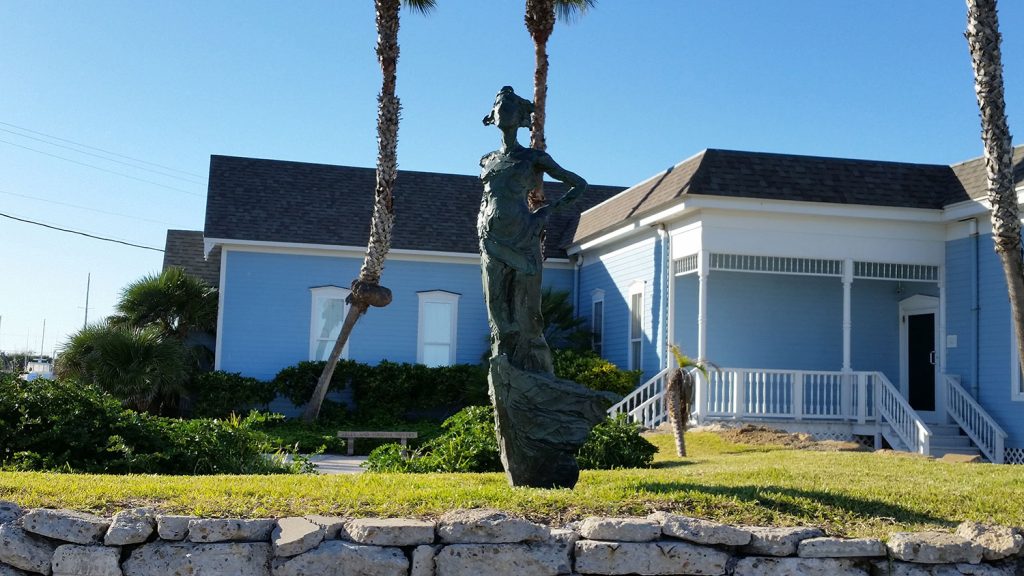
902 Navigation Circle Rockport, Texas 78382 (see map) In 1969 local artists, including Jan Wendell and Estelle Stair, formed the Rockport Art Association. Members of the association wanted a place to exhibit their work and offer art classes. The beginnings of the building fund came from the first Rockport Art Festival in July 1969. In 1978 Estelle Stair opened her gallery on Austin Street, and the Rockport Art Association found a home. Membership in the Rockport Art Association continued to grow and by 1981 the building fund had reached $80,000, which qualified it for a matching grant. On April 18, 1983 Tom O’Connor notified Art Association President Cam Leonard that the O’Connor family would donate their family home for the art center. The building (also known as the historic Bruhl-O’Connor House) was moved to its current site on Navigation Circle. On May 20, 1984 the Rockport Art Center opened its doors. Now known as The Rockport Center for the Arts, this institution provides exhibit space, art classes for adults and children, and still hosts the Rockport Art Festival in July of each year. This building was rendered unusable by Hurricane Harvey in 2017. Some elements of the Sculpture Garden are still in place.
Texas Maritime Museum
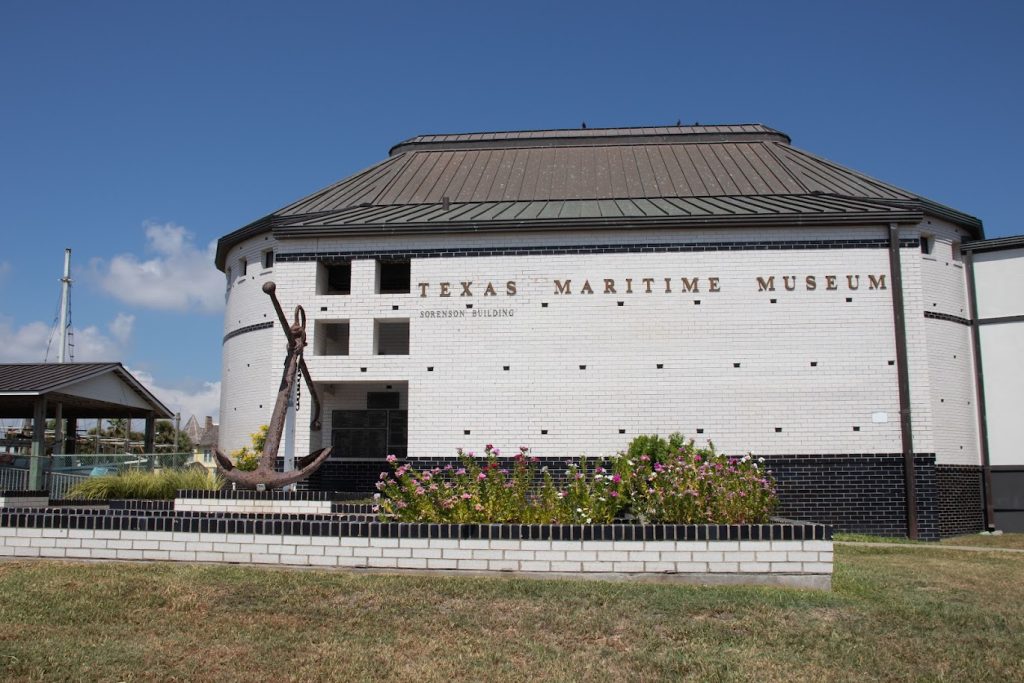
1202 Navigation Cir. Rockport, Texas 78382 (see map) The Texas Maritime Museum has been educating visitors about the rich maritime history of Texas for over 20 years. Texas history from exploration and settlement, to boat-building and shipbuilding, to sports and commercial fishing, and the search for offshore oil and gas is on display. The museum also hosts the annual Rockport Festival of Wine and Food, held every Memorial Day weekend.
Rockport Spirit Columns
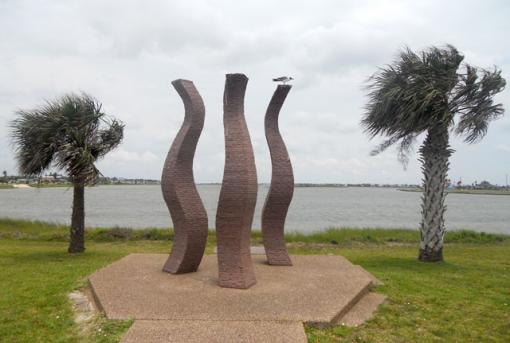
The Spirit Columns, by Rockport artist, Jesus Bautista Moroles. Sculpted from Texas Red Granite, March 31, 1998. Plaque reads – To all the dedicated volunteers of Aransas County who constantly improved the quality of our lives, with special thanks for the Parade of Palms, to the Aransas County Clean Team, Jacqueline Covill, Founder.

